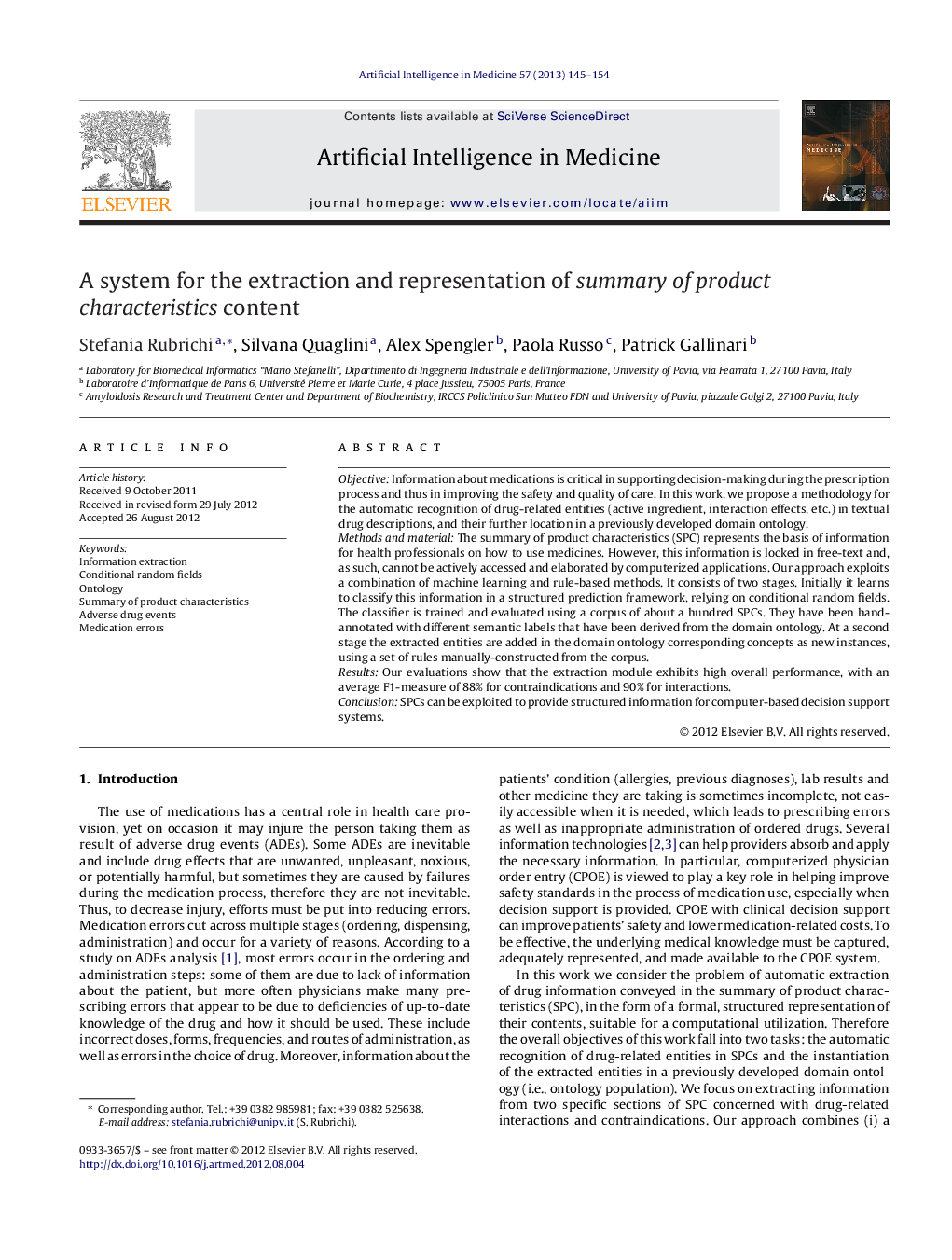| Article ID | Journal | Published Year | Pages | File Type |
|---|---|---|---|---|
| 377630 | Artificial Intelligence in Medicine | 2013 | 10 Pages |
ObjectiveInformation about medications is critical in supporting decision-making during the prescription process and thus in improving the safety and quality of care. In this work, we propose a methodology for the automatic recognition of drug-related entities (active ingredient, interaction effects, etc.) in textual drug descriptions, and their further location in a previously developed domain ontology.Methods and materialThe summary of product characteristics (SPC) represents the basis of information for health professionals on how to use medicines. However, this information is locked in free-text and, as such, cannot be actively accessed and elaborated by computerized applications. Our approach exploits a combination of machine learning and rule-based methods. It consists of two stages. Initially it learns to classify this information in a structured prediction framework, relying on conditional random fields. The classifier is trained and evaluated using a corpus of about a hundred SPCs. They have been hand-annotated with different semantic labels that have been derived from the domain ontology. At a second stage the extracted entities are added in the domain ontology corresponding concepts as new instances, using a set of rules manually-constructed from the corpus.ResultsOur evaluations show that the extraction module exhibits high overall performance, with an average F1-measure of 88% for contraindications and 90% for interactions.ConclusionSPCs can be exploited to provide structured information for computer-based decision support systems.
